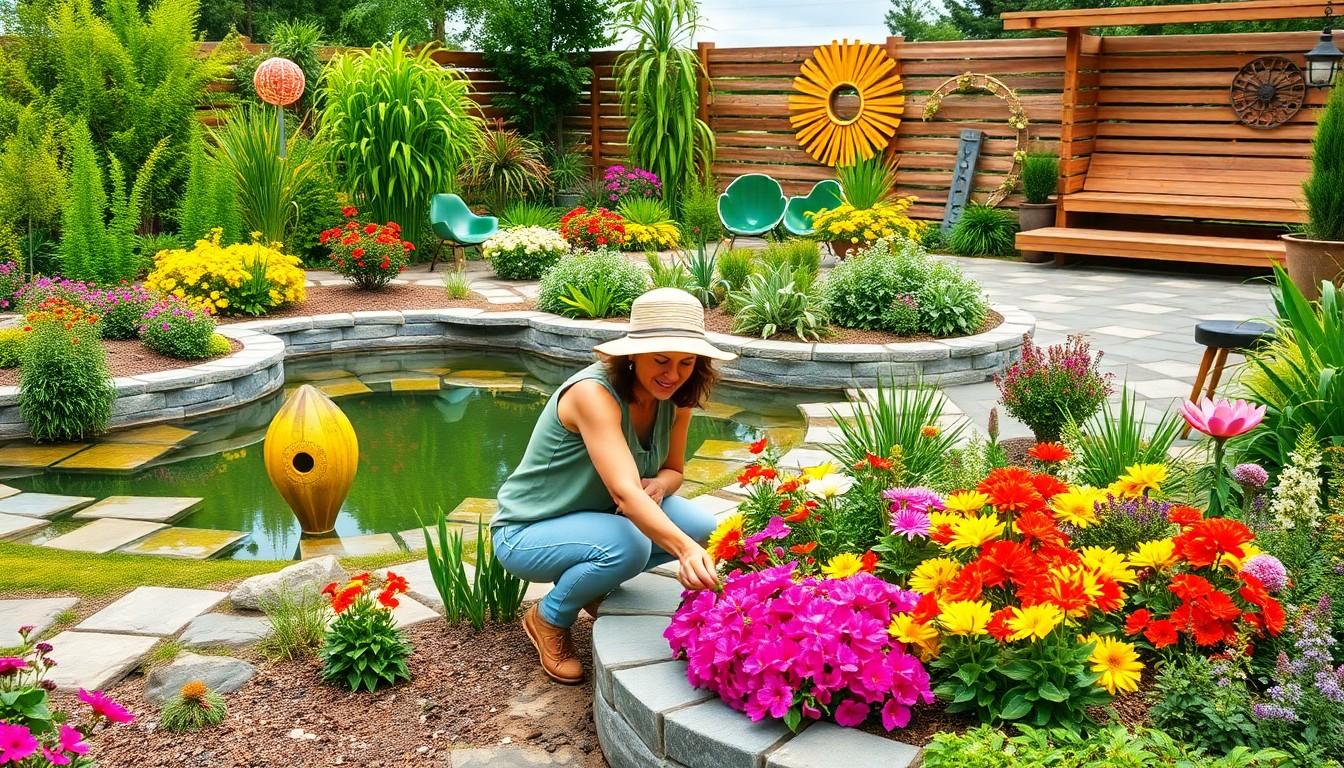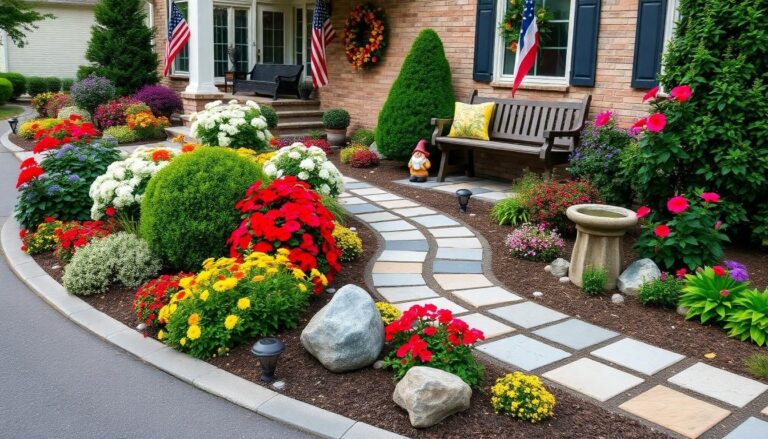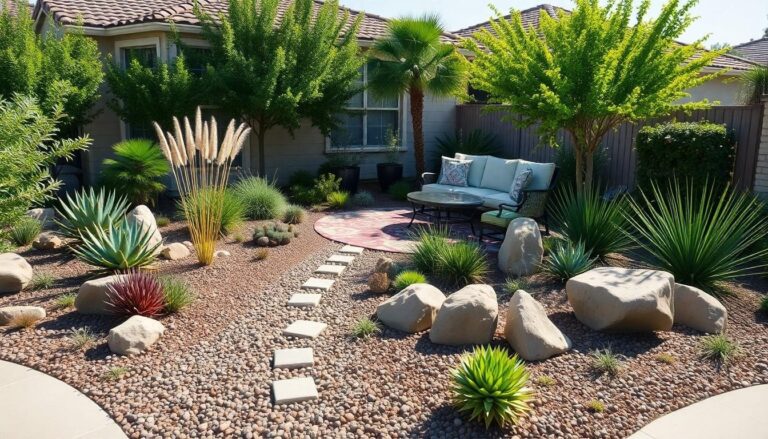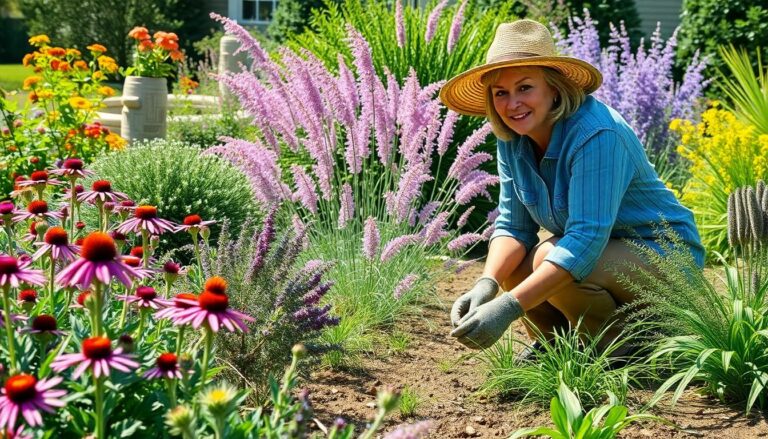Imagine stepping into a garden that feels like a whimsical wonderland rather than just a patch of grass. Creative landscaping transforms ordinary outdoor spaces into extraordinary escapes, where every corner tells a story. It’s not just about planting flowers and trimming hedges; it’s about crafting a vibrant tapestry of color, texture, and imagination that leaves visitors in awe.
What Is Creative Landscaping?
Creative landscaping transforms ordinary outdoor spaces into visually appealing environments. This approach encompasses design elements that aim to create aesthetics and functionality.
Landscaping goes beyond basic gardening tasks, integrating various materials and plants to forge a cohesive design. Geometric shapes, contrasting colors, and varied textures create a vibrant atmosphere.
Art installations and water features enhance the visual appeal while adding unique focal points. Incorporating pathways or seating areas provides functional spaces, encouraging outdoor enjoyment.
Native plants contribute to sustainability by reducing maintenance and supporting local ecosystems. Utilizing seasonal plants ensures a dynamic landscape that evolves throughout the year.
The choice of lighting also plays a critical role in creative landscaping. Properly placed lights highlight features and extend the use of outdoor spaces into the evening.
Incorporating different levels, such as terraces or raised gardens, adds dimension and interest. Each element aims to engage the senses and evoke a connection to the space.
Overall, creative landscaping reflects personal style and environmental harmony. It embraces creativity and innovation, ensuring outdoor spaces remain captivating and functional.
Benefits Of Creative Landscaping
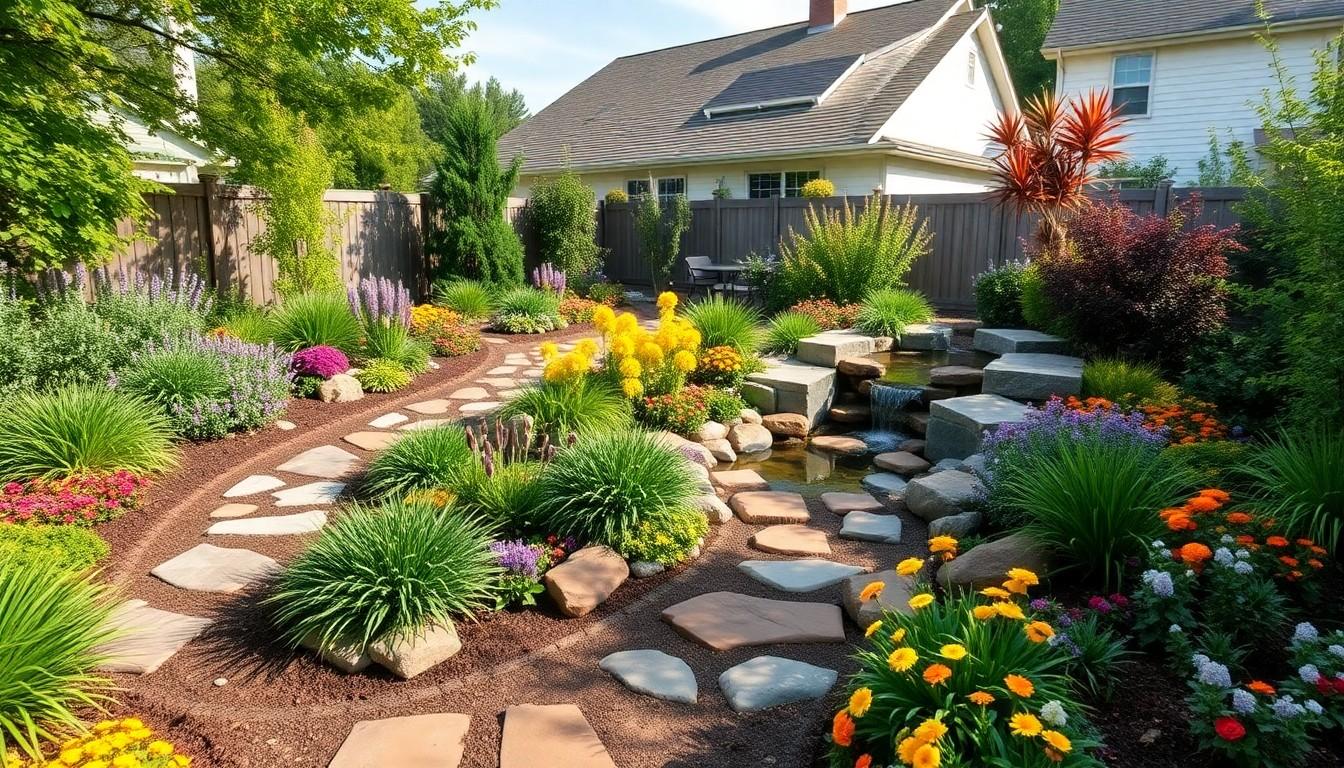
Creative landscaping offers numerous advantages, enhancing both outdoor spaces and the environment. Its thoughtful design leads to multiple benefits.
Environmental Impact
Creative landscaping promotes biodiversity by incorporating native plants. Native flora supports local wildlife, providing habitats for bees, butterflies, and birds. Sustainable practices also reduce water consumption and maintenance needs. By opting for drought-resistant plants, it minimizes reliance on irrigation systems. This, in turn, creates healthier ecosystems. Soil health improves through composting and mulching, leading to reduced erosion. Utilizing rain gardens helps manage stormwater runoff effectively. These strategies collectively contribute to a more balanced environment.
Aesthetic Appeal
Creative landscaping significantly enhances visual environments with innovative designs. Unique elements, such as artistic pathways and vibrant flower beds, attract attention. Varying colors and textures create focal points, drawing the eye across the landscape. Integration of water features adds tranquility and movement, enriching the overall experience. Well-placed lighting highlights key elements, extending enjoyment into nighttime hours. Personal style shines through individualized designs, showcasing the homeowner’s tastes. Overall, artistic landscaping transforms outdoor areas into inviting havens.
Techniques In Creative Landscaping
Creative landscaping employs various techniques that enhance outdoor aesthetics and functionality.
Use Of Color and Texture
Utilizing color and texture enriches a landscape’s visual interest. Bright, contrasting colors draw the eye and create focal points. Textured surfaces, such as smooth stones or rough bark, add depth and dimension. Layering plants with different foliage hues enhances the vibrant display. Combining flowers, shrubs, and ground covers results in a tapestry of colors and textures. Deliberate arrangements can evoke specific moods, turning a yard into an inviting retreat.
Incorporating Native Plants
Incorporating native plants promotes sustainability and ecological balance. These plants thrive in the local environment, requiring less water and maintenance. Attracting local wildlife occurs naturally, supporting pollinators and other beneficial species. Diverse plantings offer seasonal interest, displaying blooms throughout the year. Utilizing native plants fosters a sense of place and connection to the landscape. The reduction in chemical fertilizers and pesticides contributes to healthier ecosystems.
Water Features and Elements
Adding water features creates serene focal points in creative landscaping. Ponds, fountains, and streams enhance auditory and visual appeal alike. Such elements attract wildlife, providing habitats for frogs, birds, and beneficial insects. Proper placement of water features can guide movement through the space, leading visitors on a journey. Reflective surfaces amplify light and create an illusion of depth. Overall, integrating water elements fosters relaxation and invites contemplation in outdoor environments.
Trends In Creative Landscaping
Creative landscaping includes innovative approaches that emphasize sustainability and simplicity. These trends focus on enhancing outdoor spaces while minimizing environmental impact.
Sustainable Practices
Sustainable practices dominate creative landscaping trends. Incorporating native plants supports local ecosystems, attracting beneficial insects and wildlife. Rain gardens collect excess stormwater, reducing runoff and promoting hydration for local flora. Composting enriches soil health, ensuring robust plant growth with fewer chemical fertilizers. Implementing xeriscaping techniques conserves water, particularly in areas prone to drought. Homeowners increasingly utilize organic gardening methods that prioritize environmental health while maintaining stunning aesthetics.
Minimalist Designs
Minimalist designs carve out clean, tranquil spaces in creative landscaping. Reducing clutter allows natural beauty to shine through, focusing attention on essential elements. Simple geometric shapes define pathways and garden beds, fostering harmony and movement. A limited color palette creates a serene environment, while strategic plant selection enhances visual interest without overwhelming. Incorporating functional features such as seating areas and fire pits promotes outdoor enjoyment in uncluttered spaces. These designs reflect a modern, thoughtful approach to landscaping that resonates with many homeowners.
Conclusion
Creative landscaping offers a unique opportunity to elevate outdoor spaces into stunning environments that reflect personal style and promote sustainability. By blending artistic design with functional elements, it transforms ordinary yards into inviting retreats. The integration of native plants and innovative features not only enhances visual appeal but also fosters environmental harmony.
As trends shift towards sustainability and minimalist designs, homeowners are encouraged to embrace these practices for a more responsible approach to landscaping. Whether it’s through vibrant flower beds or serene water features, creative landscaping invites individuals to explore their creativity while enjoying the beauty of nature. Ultimately, it’s about crafting spaces that inspire relaxation and connection with the outdoors.

